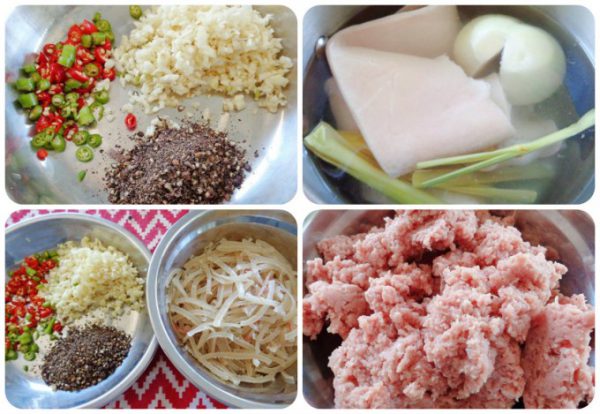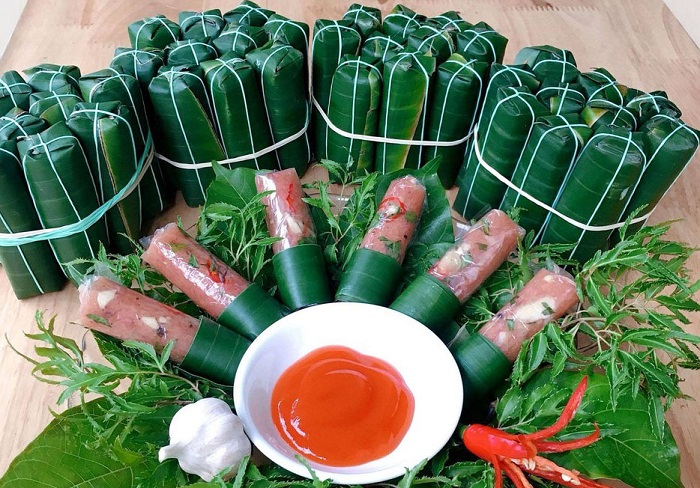Nem Chua Đại Từ
1. Overview
Fermented pork rolls (Nem chua) from Đại Từ district, Thái Nguyên, are a beloved northern Vietnamese specialty. Known for their balance of sourness, spiciness, and chewiness, these handmade treats are often enjoyed as a snack, appetizer, or an accompaniment to drinks. With roots in traditional preservation methods, nem chua Đại Từ stands out for its quality ingredients and distinctive flavor.
2. Characteristics
-
Main ingredients: Finely minced lean pork, boiled pork skin, garlic, chili, roasted rice powder, and salt.
-
Appearance: Small pink rolls wrapped tightly in layers of banana leaves.
-
Texture: Firm and slightly chewy, with crunchy pork skin bits.
-
Flavor: Tangy and savory, mildly spicy from chili and aromatic from garlic.
3. How It's Prepared
The process of making nem chua Đại Từ requires care and experience:
-
Mixing: Fresh minced pork is mixed with shredded pork skin, ground roasted rice, garlic, and seasonings.
-
Shaping: The mixture is shaped into small rolls or squares.
-
Wrapping: Each piece is tightly wrapped in banana leaves to support fermentation.
-
Fermenting: The rolls are left at room temperature for 2–3 days to naturally ferment, developing their signature sourness.
4. Cultural Significance
-
Local pride: Nem chua has become a culinary identity of Đại Từ, often brought as gifts or served at family gatherings.
-
Traditional preservation: This dish reflects the resourcefulness of rural Vietnamese in food preservation.
-
Popular pairing: It’s a classic choice to accompany rice wine (rượu nếp) during social meals or celebrations.
5. How to Enjoy
-
Serving: Unwrap the banana leaves and eat directly, often with a slice of garlic or chili inside.
-
Pairing: Enjoy with pickled vegetables or as a drinking snack.
-
Storage: Best consumed within a few days, though refrigeration can extend shelf life while preserving the flavor.
Whether you're savoring it at a countryside market or bringing it home as a local souvenir, nem chua Đại Từ offers a tangy taste of Thái Nguyên’s culinary heritage.



